
In this listicle, we’re delving into 20 of the weirdest things dogs do – behaviors that would be pretty odd in the human world, but are totally normal in the canine realm. From zoomies to grass-munching sessions, let’s take a look at these wonderfully weird doggy quirks and try to decode what on earth’s going on!
Darling dogs. They’re “man’s best friend”, our lovable sidekicks, but often downright bizarre. If you’ve ever caught your pup circling five times before lying down, chasing squirrels in their sleep, or rolling in some revolting excrement, you’re not alone.
While these behaviors might leave you scratching your head (and sometimes looking away in disgust), there’s usually a logical explanation rooted in instinct, communication, or plain old doggy joy.
Weird things dogs do
1. Zoomies
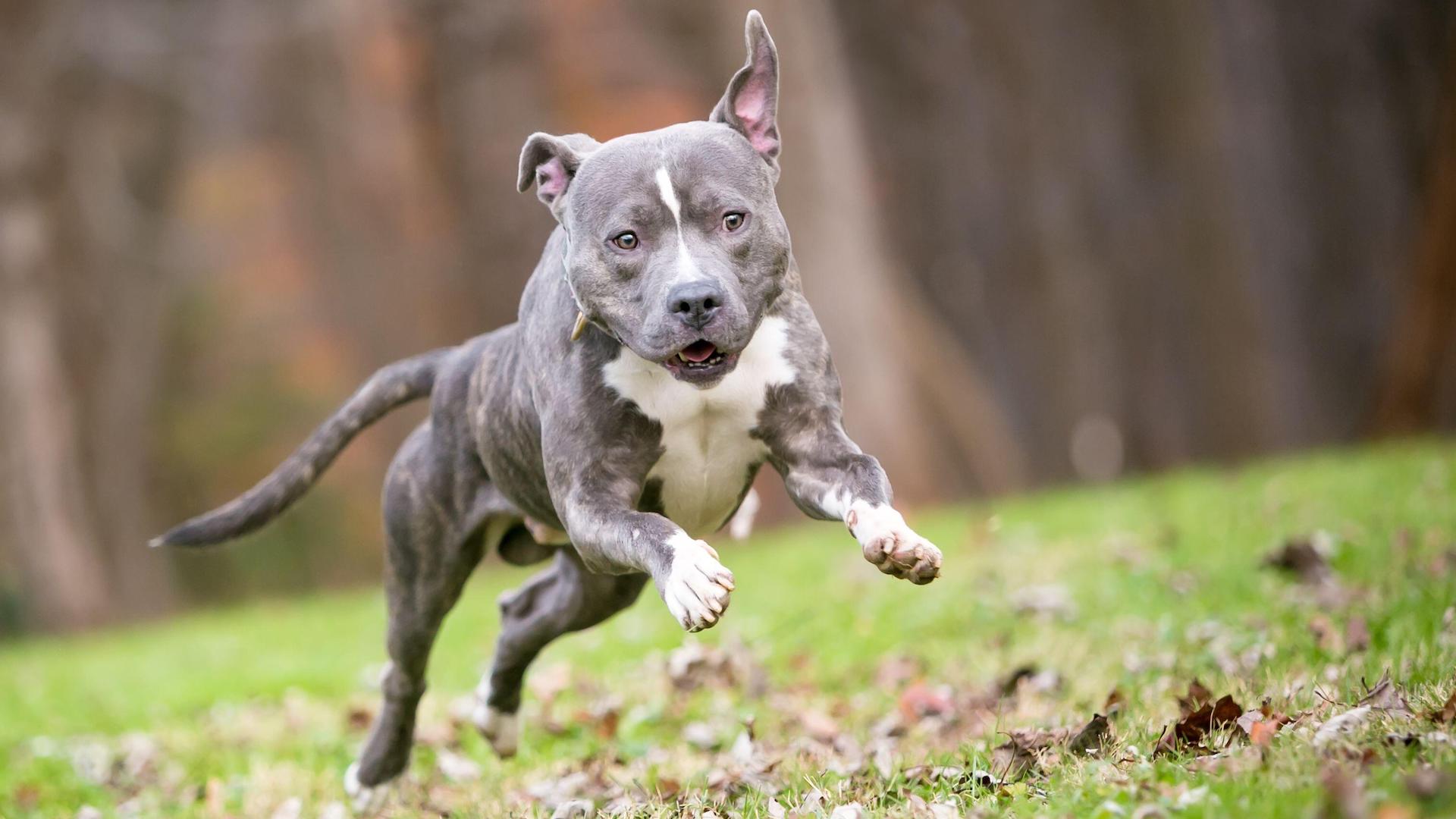
Why do dogs get the zoomies? Well, zoomies are a burst of energy where a dog will tear round in circles – whether in a field or a living room – at their top speed (wide variation from whippet to Bulldog). Zoomies even have an official name – FRAPs, which stands for frenetic random activity periods.
Dogs do this to release pent-up energy, through stress or excitement. It may look crazy, but it tends to be a natural, healthy behavior for an active dog.
2. Sniffing other dogs' butts

This is a weird one in human terms. Bizarrely, it’s much like us shaking hands; it’s a simple greeting, whether or not we are already acquainted. Dogs typically sniff each other’s butts as a way of interacting socially and gathering information about one another.
Each dog has unique scents and pheromones that are released from their anal glands, which can tell others about their identity, gender, reproductive status, health, and even mood. Much more revealing than a handshake!
3. Licking their privates

Dogs seem to be happy to lick their private parts in public, however impolite it looks. There are a number of reasons why they might do this, including normal grooming or personal hygiene. However, if you notice they are licking excessively, this may indicate an underlying health issue, discomfort or irritation, or it may be due to anxiety or stress.
4. Chasing their own tail
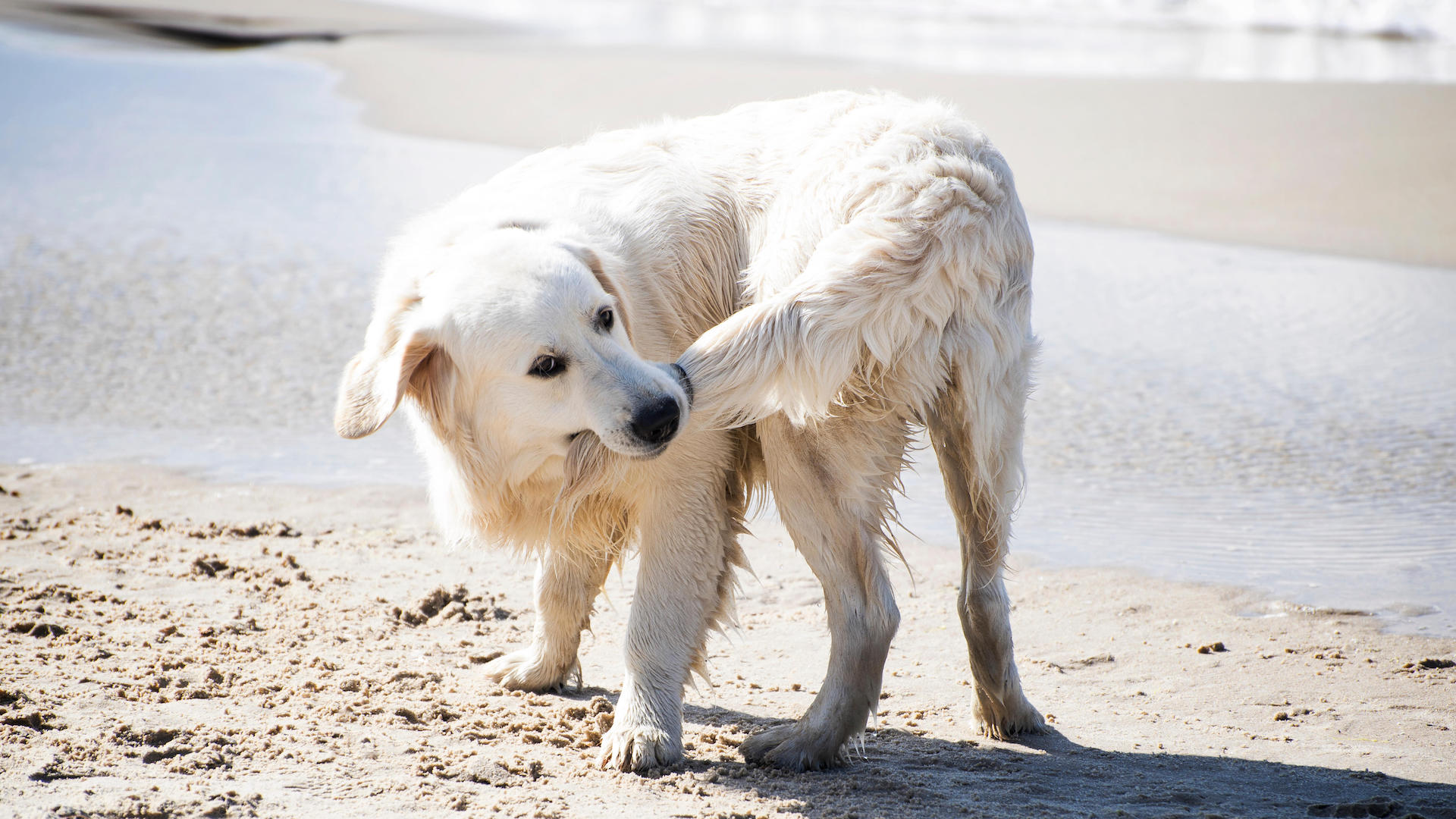
Many dogs chase their tails, whether it’s due to pent-up energy and excitement or more concerning reasons.
It could be just a playful pup exploring his own body, or a burst of activity, however, it could be because they are trying to tackle pain, irritation, parasites, or insect bites.
Another red flag for tail chasing is if it is excessive or brought on by stress or anxiety, as it can be a symptom of canine compulsive disorder (OCD in dogs). If it gets very obsessive, they may even bite their tail and cause it to bleed.
5. Digging holes
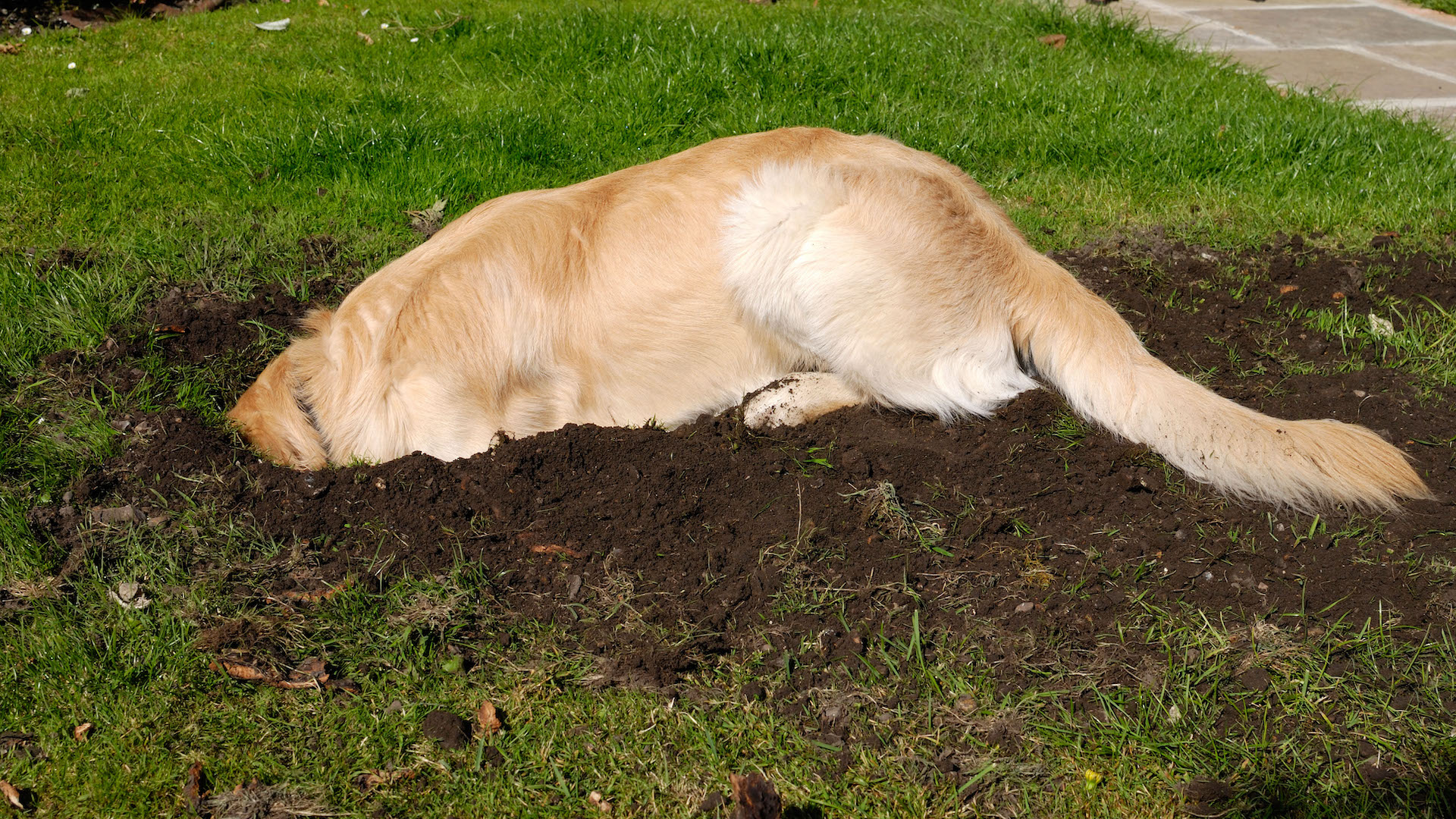
It’s a hilarious sight seeing your dog’s head in the earth, bum up, tail frantically wagging. Hilarious, that is, if you didn’t have an immaculate lawn that they’ve just destroyed.
Digging is a very natural activity for dogs. It may hark back to their ancestors needing to hide food or dig for small prey. They may be trying to escape under the yard fence. Whatever the cause, it’s usually a good idea to know how to stop a dog digging. If it’s clearly a cherished activity, you could cordon off a permitted area, such as a doggy sandpit, where they are allowed to dig to their heart’s content.
6. Rolling in stinky things
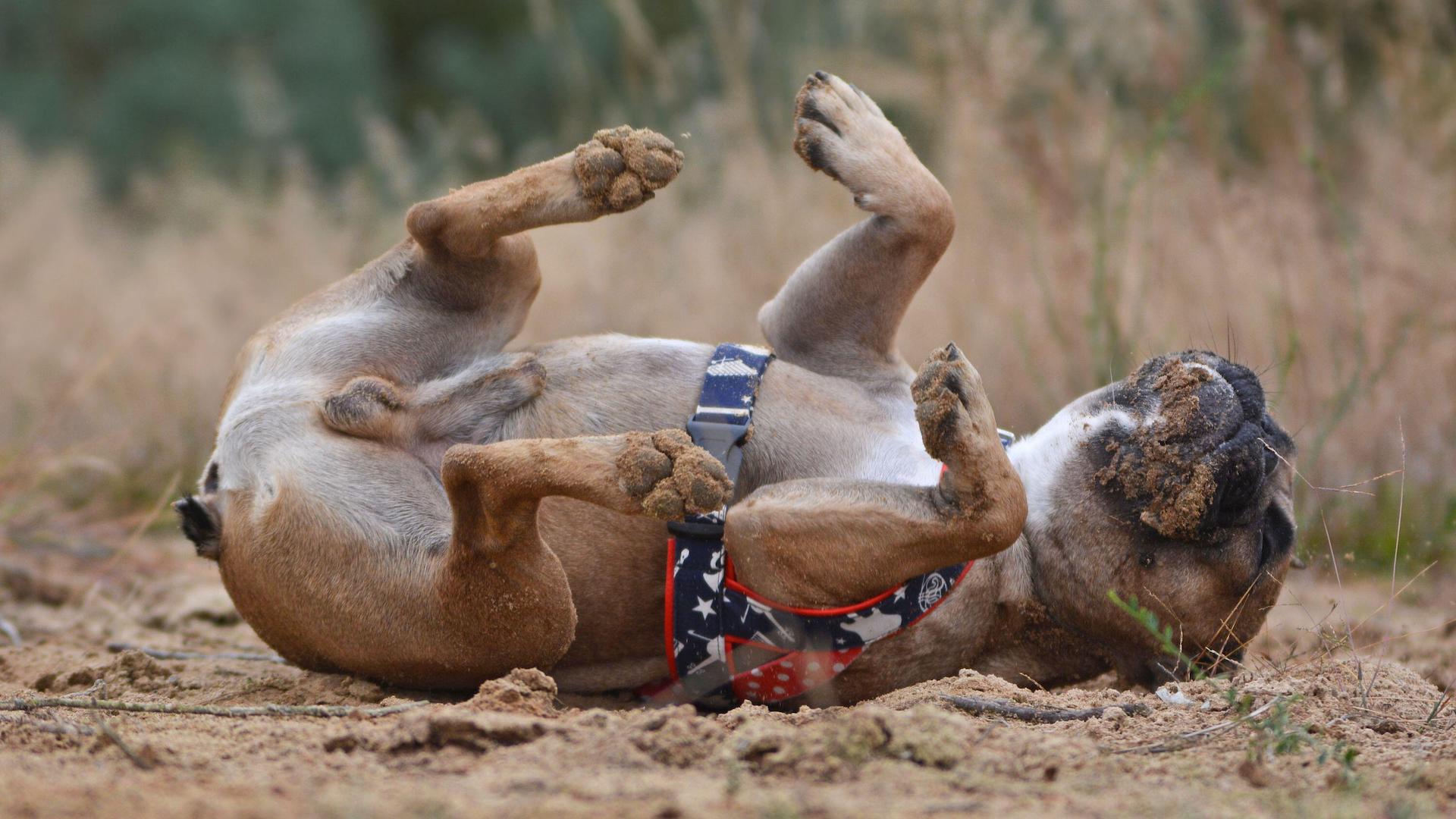
It’s a common passion for dogs to find something especially revolting to roll in, which then takes a lot of water and soap suds to get rid of the stench.
It’s thought that his behavior has its roots in their ancestral relatives. Wild dogs and wolves may have used the strong scent of other animals to mask their own smell, so it would be easier for them to hunt. Or they’d bring back the smell to their “camp” to share information about the location of food sources or possibly lay claim to a certain area.
In the case of our domestic dogs, it probably simply signals “I’ve been on an adventure”!
7. Bum scooting
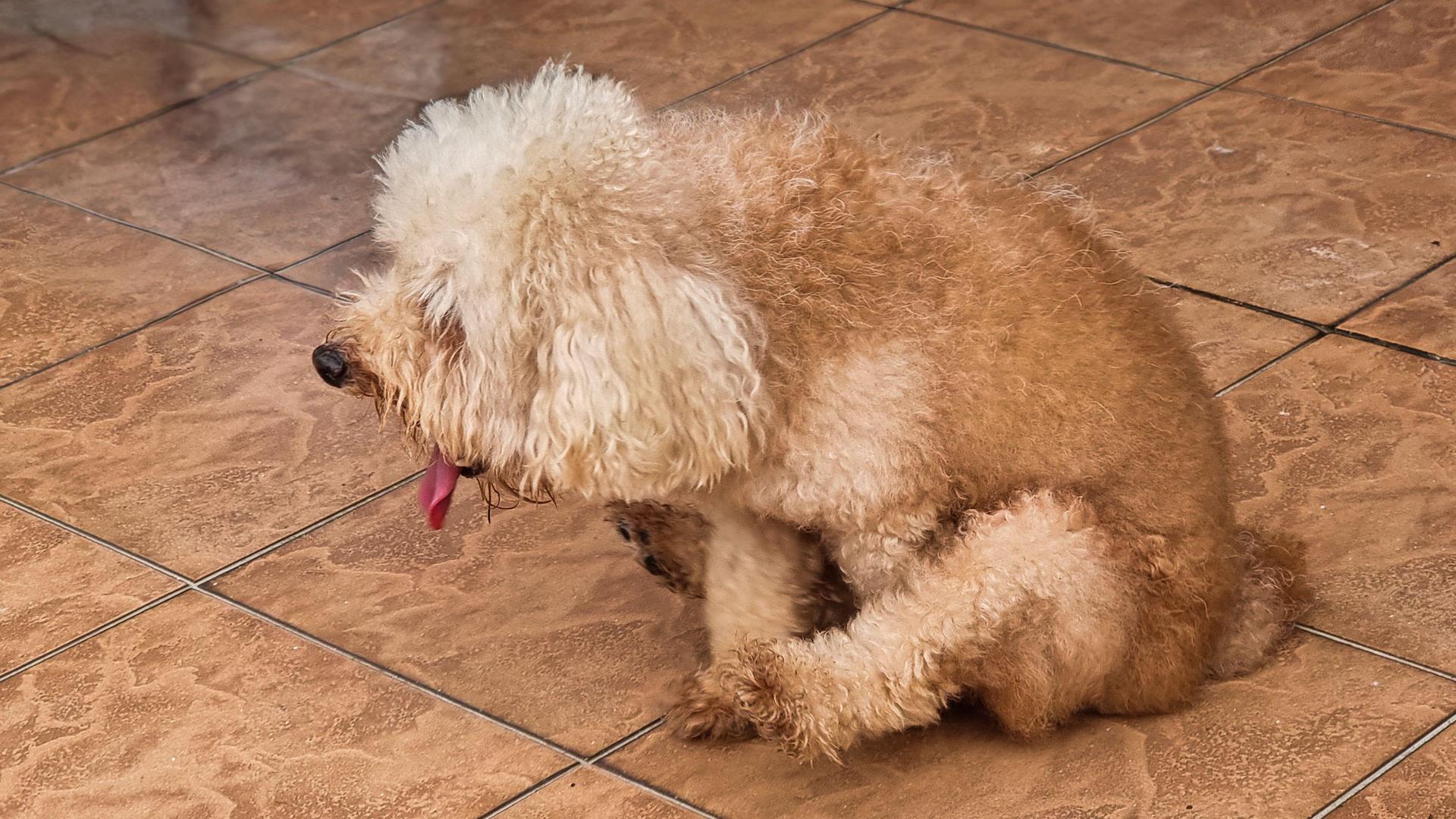
Scooting is when a dog drags its butt along the ground. It is fairly common canine behavior, but it is something to monitor as it is a sign that your pup may have some irritation in that area, such as parasites or blocked anal glands.
Other causes may be food allergies, irritation from grooming, and injured anal sacs. In rare cases, it may also indicate neurological issues.
8. Kicking after pooping
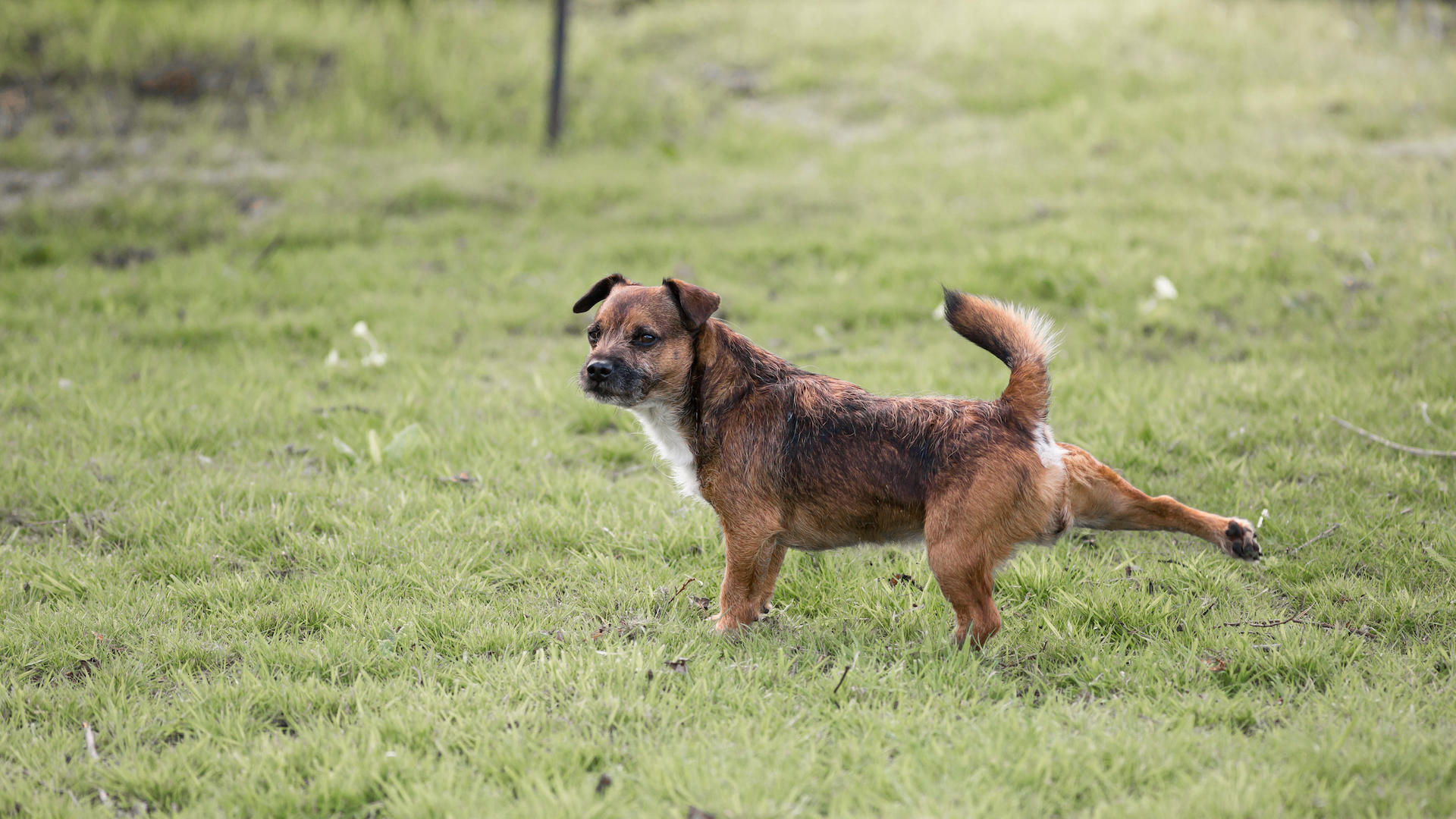
When dogs kick after pooping – also known as ground-scratching – you may think they are trying to cover up their feces, but the reality is rather less tidy in motive. This behavior is typically a way of spreading their scent (quite the opposite of tidying it away) and letting other dogs know that they have been there and left their mark.
9. Circling before lying down
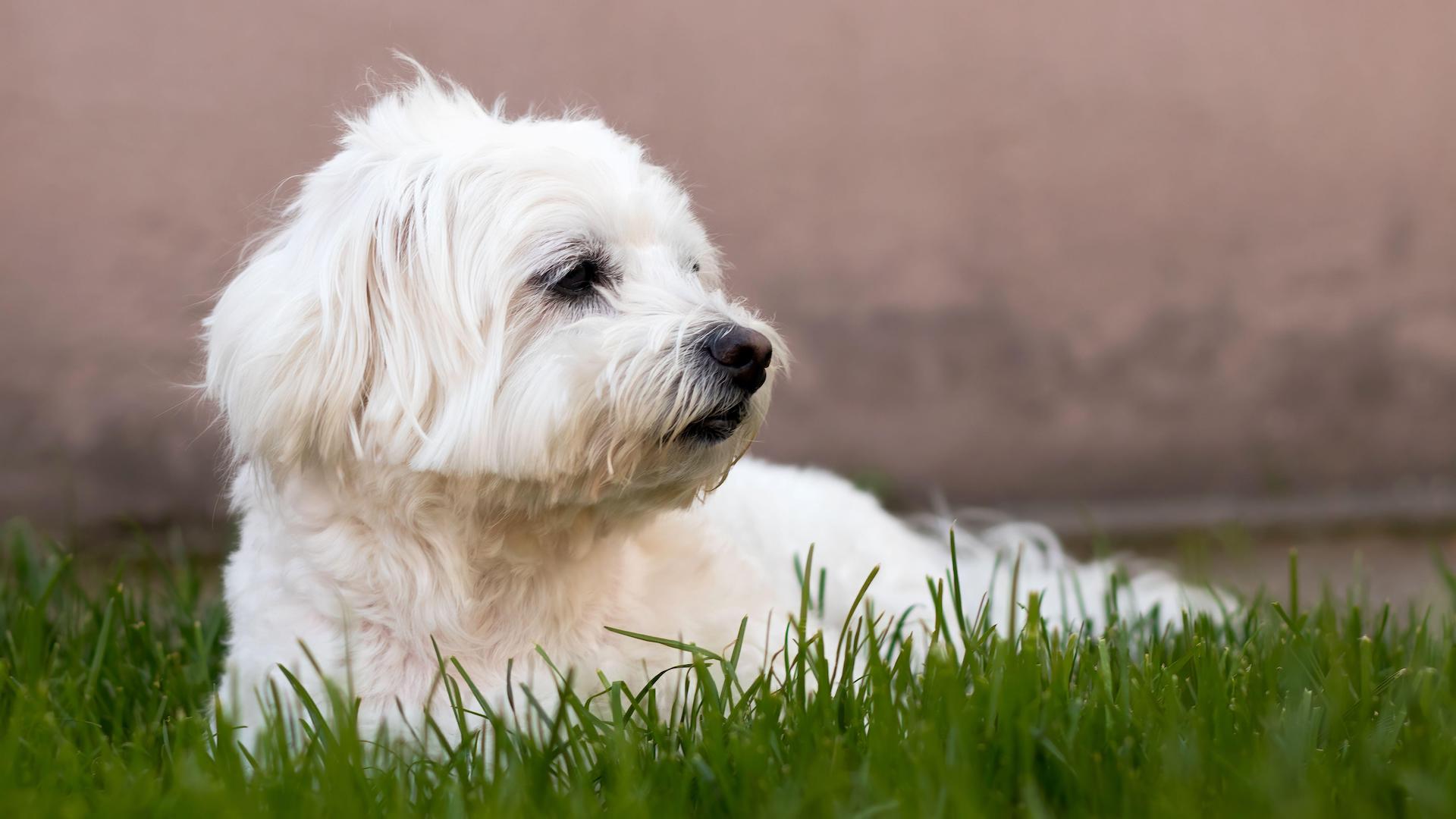
This is a cute sight to behold – a dog circling several times, before finally settling into their cosy nest of a bed. Unlike some other behaviors, this has no red flags, but does link back to their roots as wild dogs.
In the wild, dogs would flatten the grass or undergrowth – or even snow – to create a safe and cosy place to sleep. It also enables them to check out their immediate surroundings 360º thoroughly. Naturally, our cosseted pets don’t need to do this in their plush beds, but they can’t help themselves.
10. Twitching while sleeping
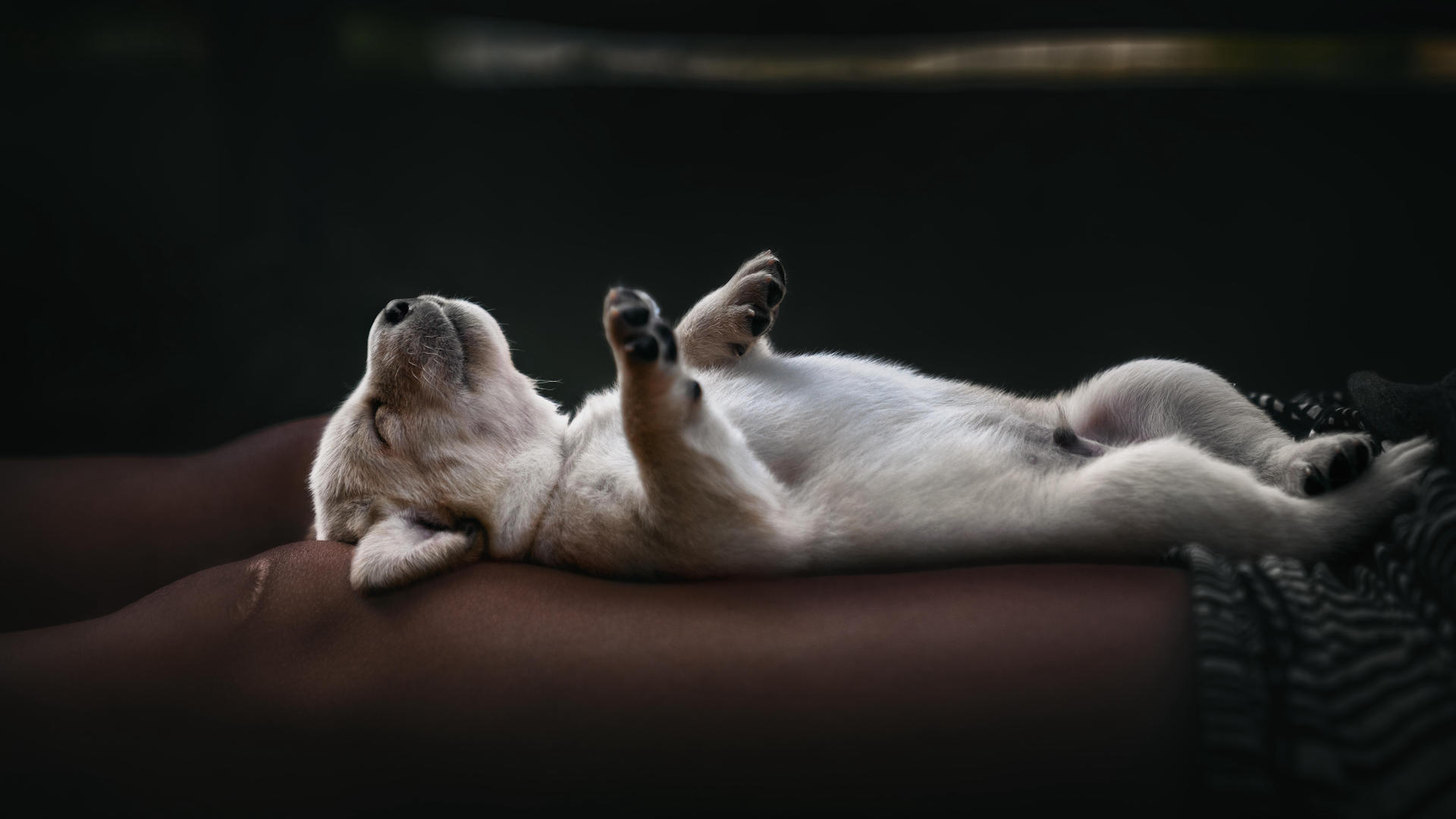
Dogs that sleep in an outstretched position, rather than curled up in a tight ball, often twitch in their sleep. These involuntary movements give the impression of the sleeping dog dreaming that they are chasing prey in their sleep, particularly when it’s accompanied by squeaking!
You’ll be familiar with the REM – rapid eye movement – phase of sleep in humans, and research (by Stanley Coren, psychology professor and canine expert) indicates that dogs are similar. In humans, this is the stage of sleep during which, if woken, we report we’ve been dreaming. So it’s likely that dogs also experience dreams – and may well be busy flushing birds, chasing balls, or wherever their dream world takes them.
Very occasionally, it may be due to a medical issue, so if you have any concerns about abnormal twitching, consult your vet.
11. Eating poop

“Coprophagia” – the technical term for eating faeces – is seen in around a quarter of dogs, according to the UK Kennel Club. Although it seems a revolting habit to us, it is quite normal. It isn’t typically a major issue, but due to habit, stress, or boredom. It may even be due to hunger or greed.
Always pick up poops in the backyard, and work on the “leave it” command to encourage them to kick the habit.
12. Herding
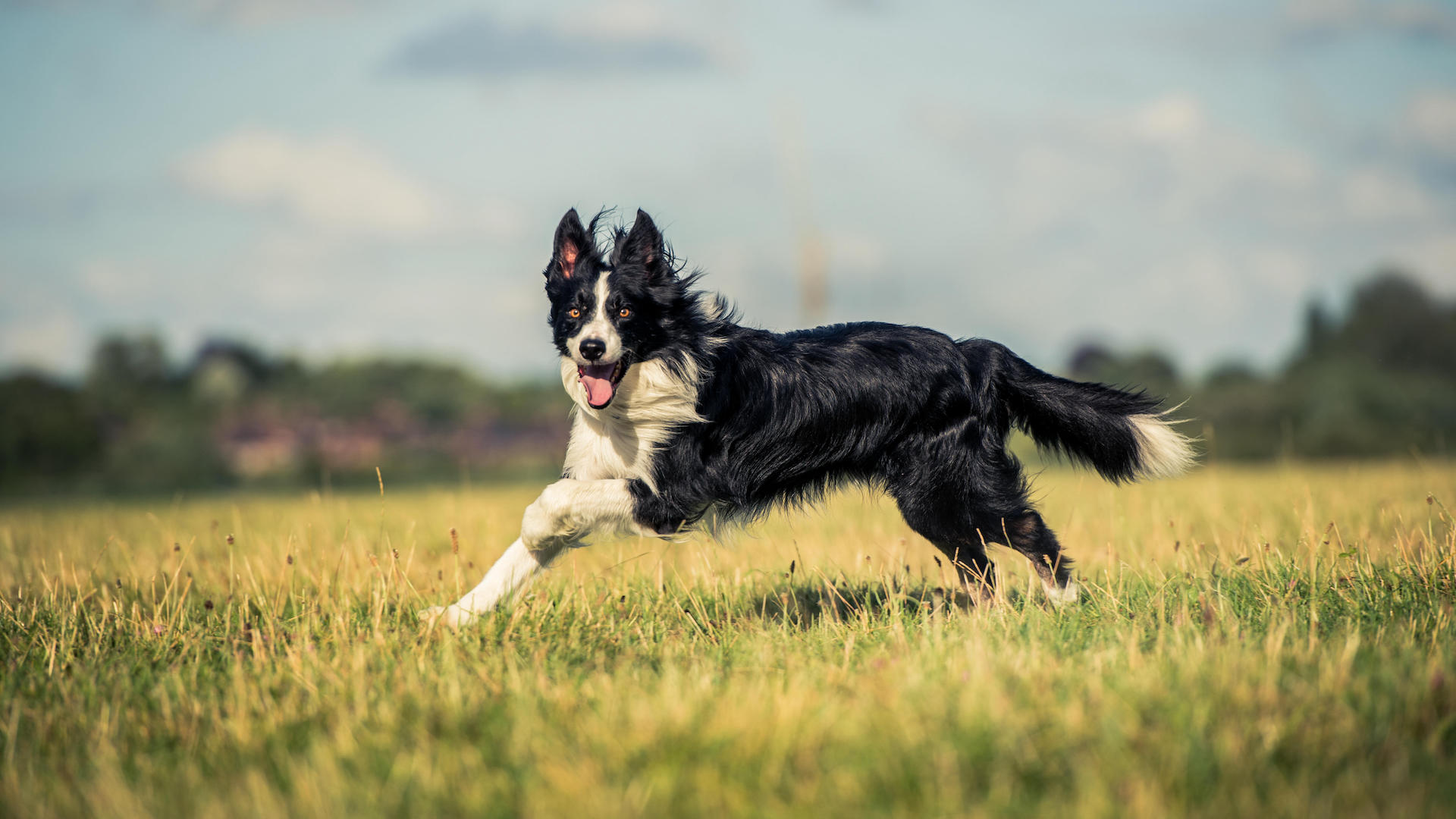
If you have a herding dog, be prepared that this is entirely natural behavior. They are hardwired to herd anything that moves, whether that’s sheep, other dogs, or even sheep. It can be hilarious, but also unacceptable in the wrong context and even downright scary.
Don’t blame them for being attention-seekers, as they are simply following their natural instincts. And the faster the kids run, the quicker the dog will move to do its job. Such fun!
Instead, they need to learn when herding is unacceptable, with commands such as “sit” or “leave it”. Give them plenty of exercise and mental stimulation, and they won’t have quite so much excess energy to burn off.
13. Howling
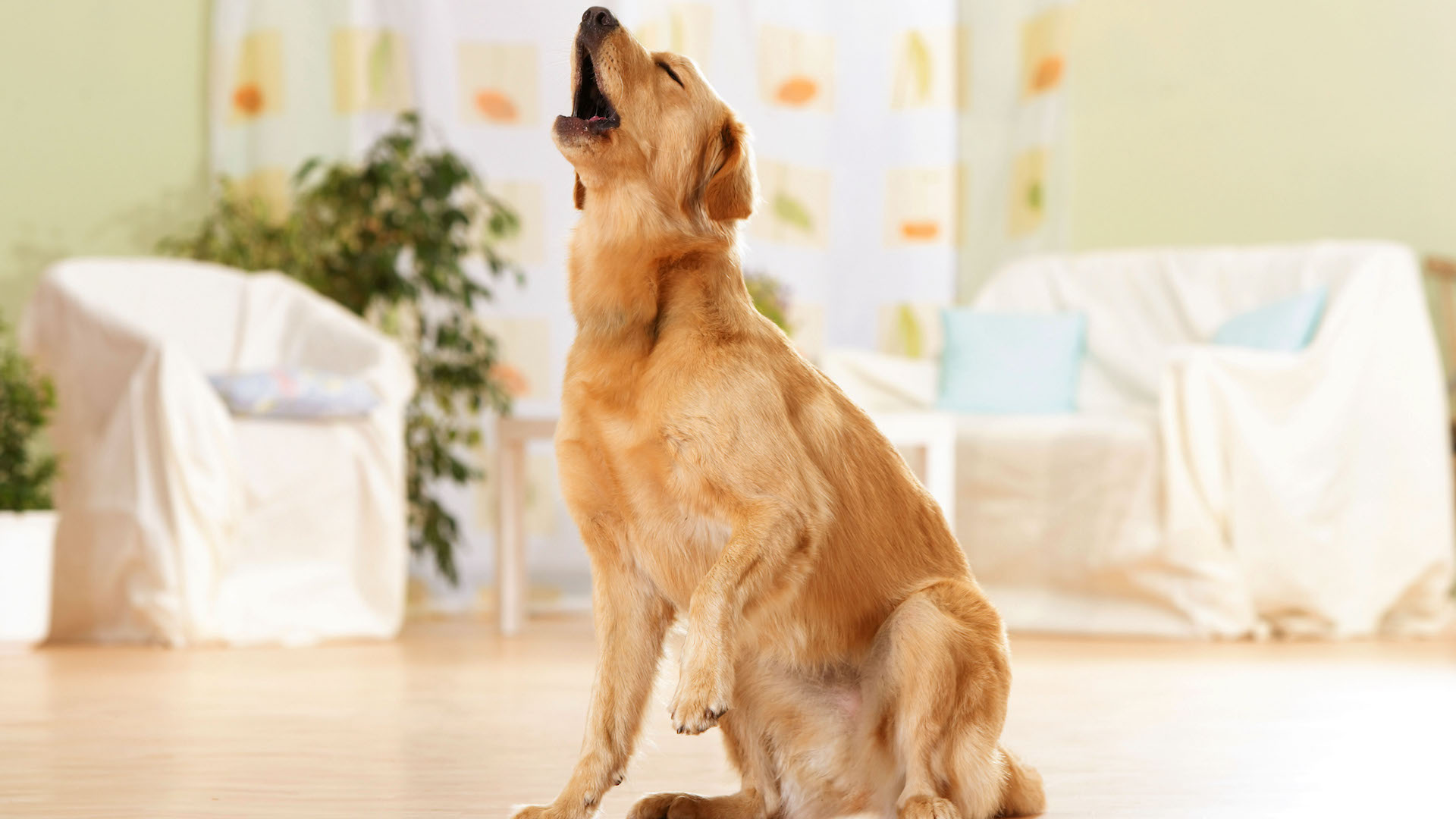
Howling is for wolves, right? Unfortunately for those with a low noise tolerance, howling is common in domestic dogs, though there are certain breeds – Siberian Huskies, we’re hearing you – much more likely to do so. Unlike the short, sharp nature of a bark, a howl is a long, drawn-out, mournful sound, typically with the head tilted back to maximise the volume – perfected by some of the loudest dog breeds.
There are many reasons why dogs howl, from communicating with the pack to warding off intruders or even expressing anxiety or pain. Some even seem to mimic music or sirens and howl in response.
14. Eating grass
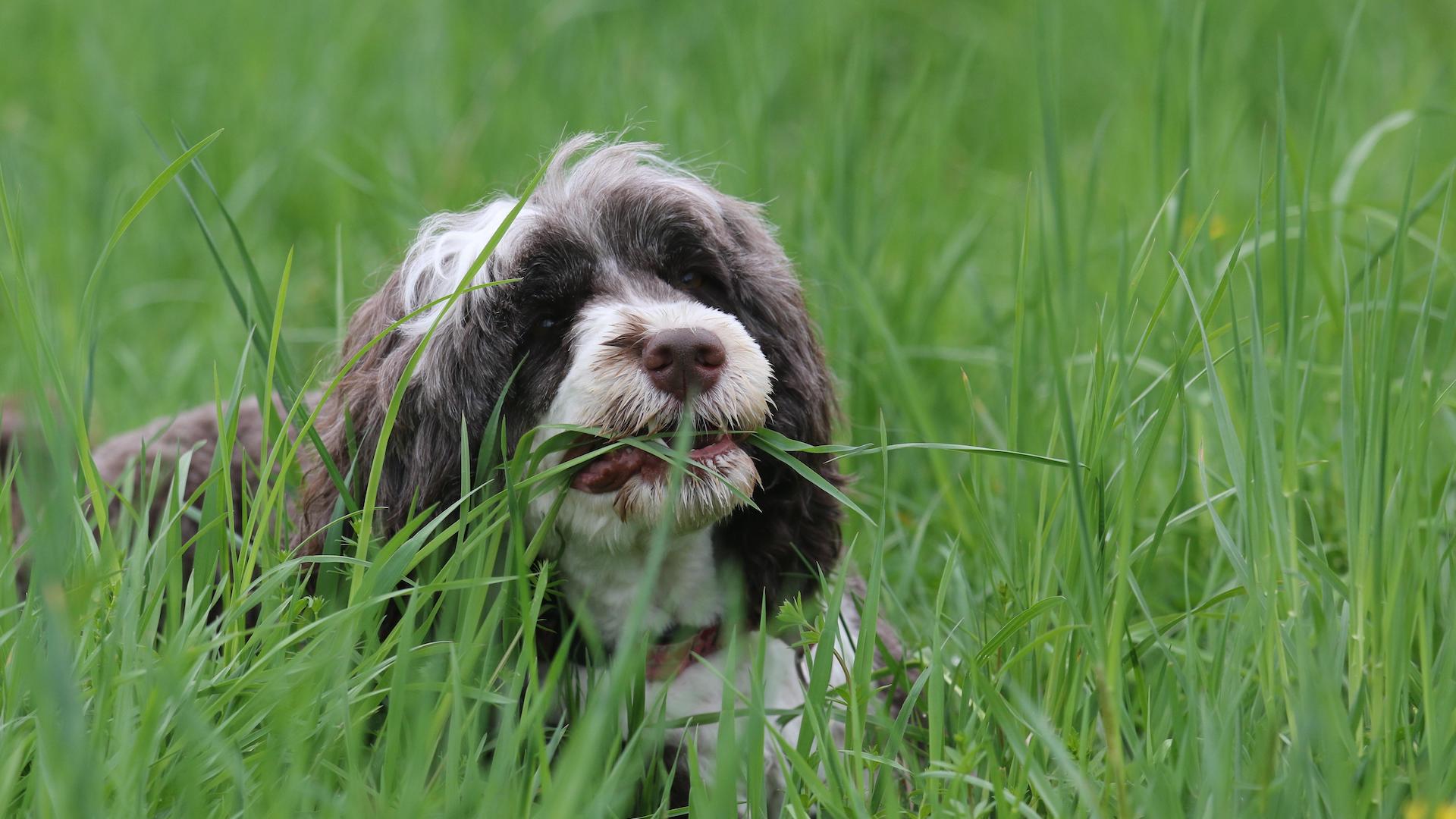
Most dog owners will observe their pooch eating grass at some point. There are many possible reasons why a dog might eat grass, but the ultimate motivation remains a mystery.
Digestive issues, such as nausea, are thought to provoke some dogs – and indeed they are often a little sick after nibbling the green stuff – but some just seem to relish the taste and texture.
15. Hiding their toys
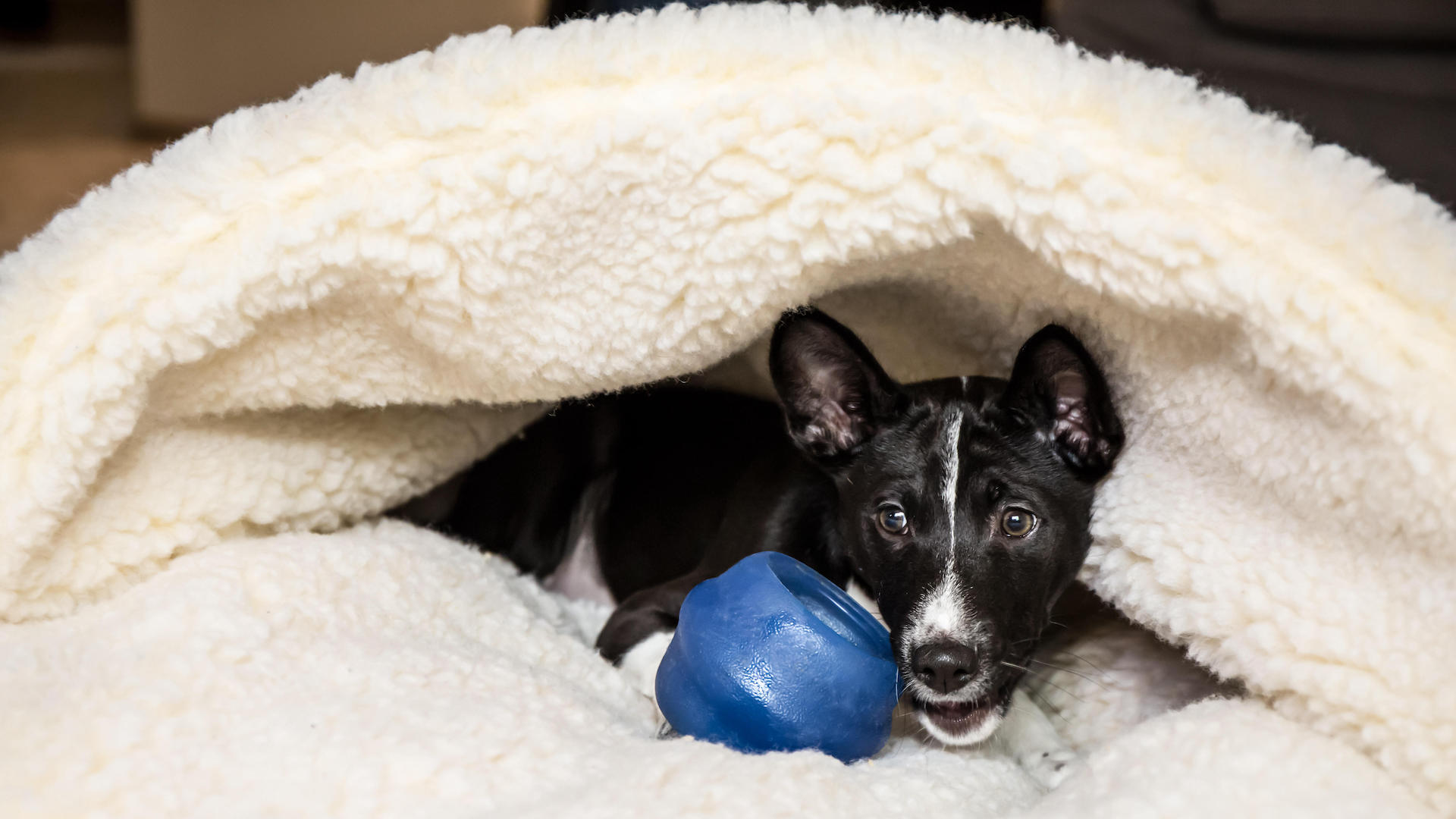
Squirrels store nuts; some dogs hide their treats and toys. It’s simply an innate hoarding habit that taps into their survival strategy. It can be a sign of stress, or that the dog wants to keep his stuff safe from other pets in the household.
On the other hand, many pups are far too greedy to save their treasure for a rainy day, just like humans!
16. Kicking when you scratch them
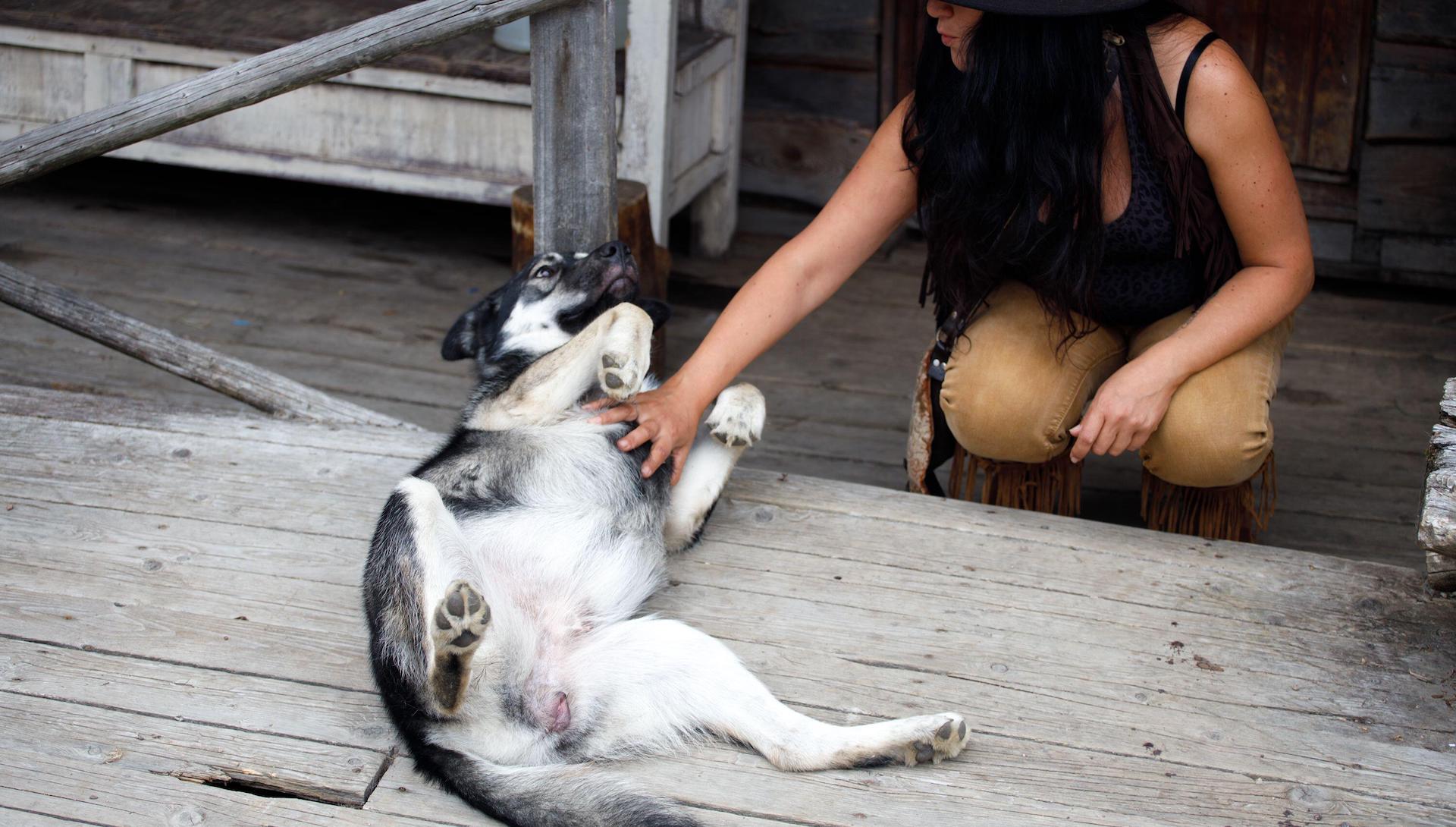
Do you ever find your dog kicking out a hind leg when you tickle his tummy? Not sure whether you’ve hit a sweet spot or you’re irritating him? In truth, it’s hard to know. It’s likely that you’ve touched a cluster of nerves between the skin that provoke the “scratch reflex,” activated by sensory neurons. It is a natural reflex triggered also by biting insects to help them get rid of the pests.
Watch your dog carefully – some appear to enjoy the sensation, but if he looks uncomfortable or wants to move away, it’s a sign to stop.
17. Air sniffing
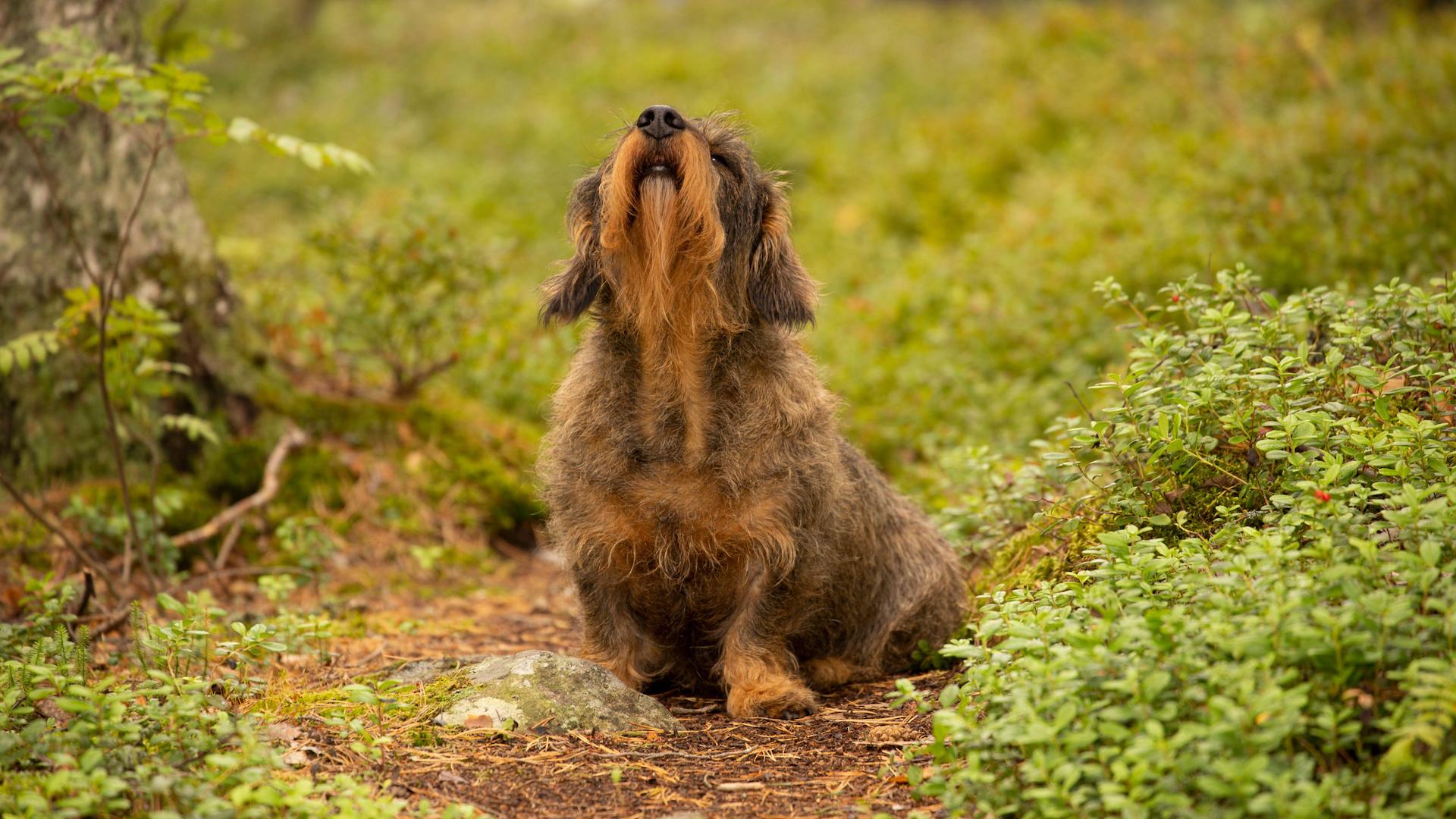
Dogs have an unbelievable sense of smell in comparison to humans, with 200 million olfactory receptors compared to our miserly five million.
When your dog raises their nose to sniff the air, you can be sure that there is a plethora of powerful scents on the wind that they are trying to decipher. It could be another dog communicating a message, a waft of potential food on the airwaves, or a change in their environment.
18. Licking you

Dog slobber is far from delightful, but if your dog is licking you, he’s probably trying to express his affection. While we might shake hands, exchange kisses, or hug our friends, dogs have an instinct for licking.
Their mum licked them, they lick each other – why would they need any other way of communicating their love for you? After all, they can’t reciprocate our stroking them!
19. Asking for tummy tickles
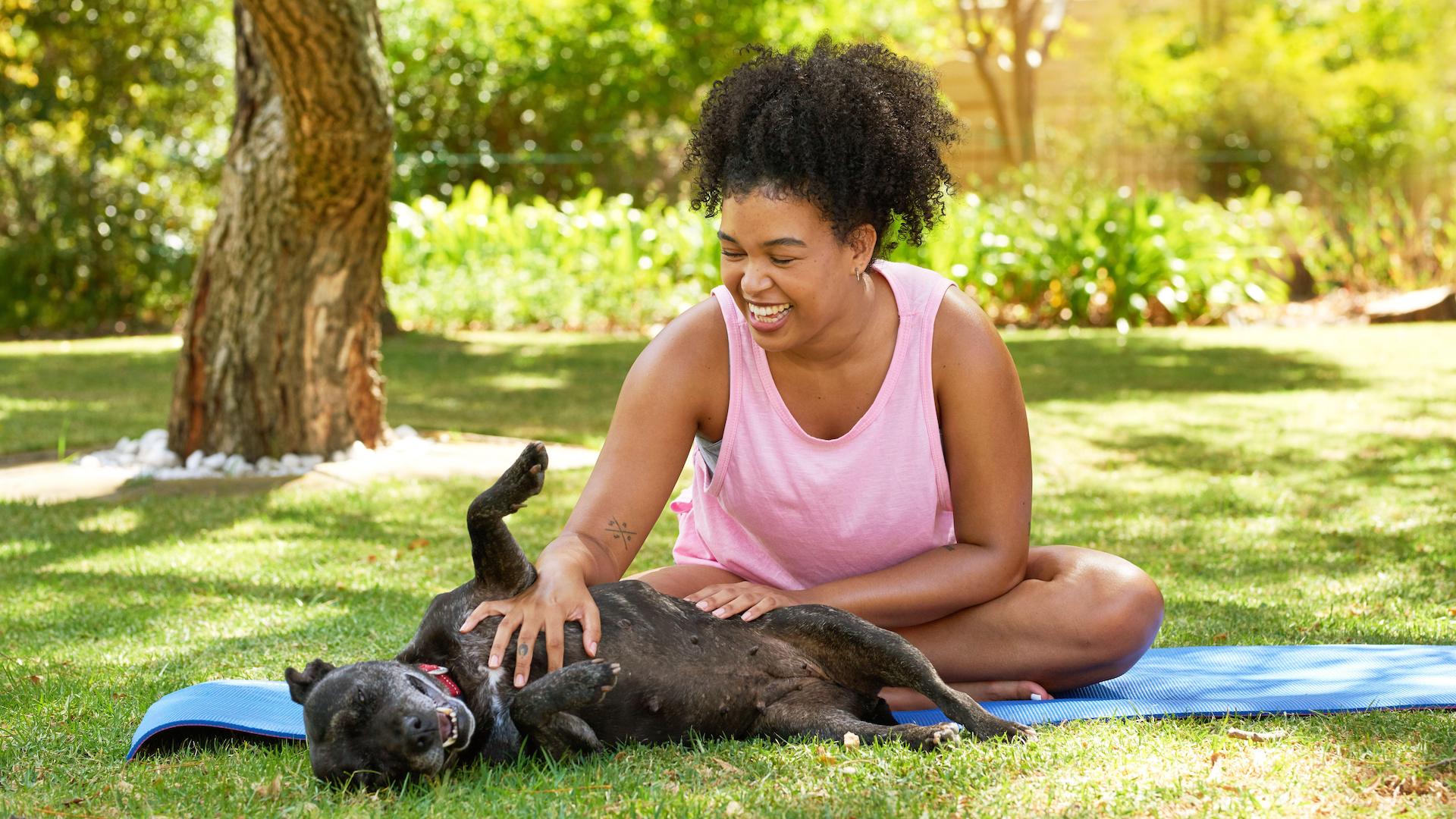
Some dogs love nothing better than rolling onto their back for a tummy tickle. Paws in the air, tail wagging, this position shows they have complete trust in their surroundings, because they are totally vulnerable.
Dogs tend to find belly rubs soothing as the touch sensation releases feel-good hormones, which in turn help with bonding and affection.
20. Chasing shadows
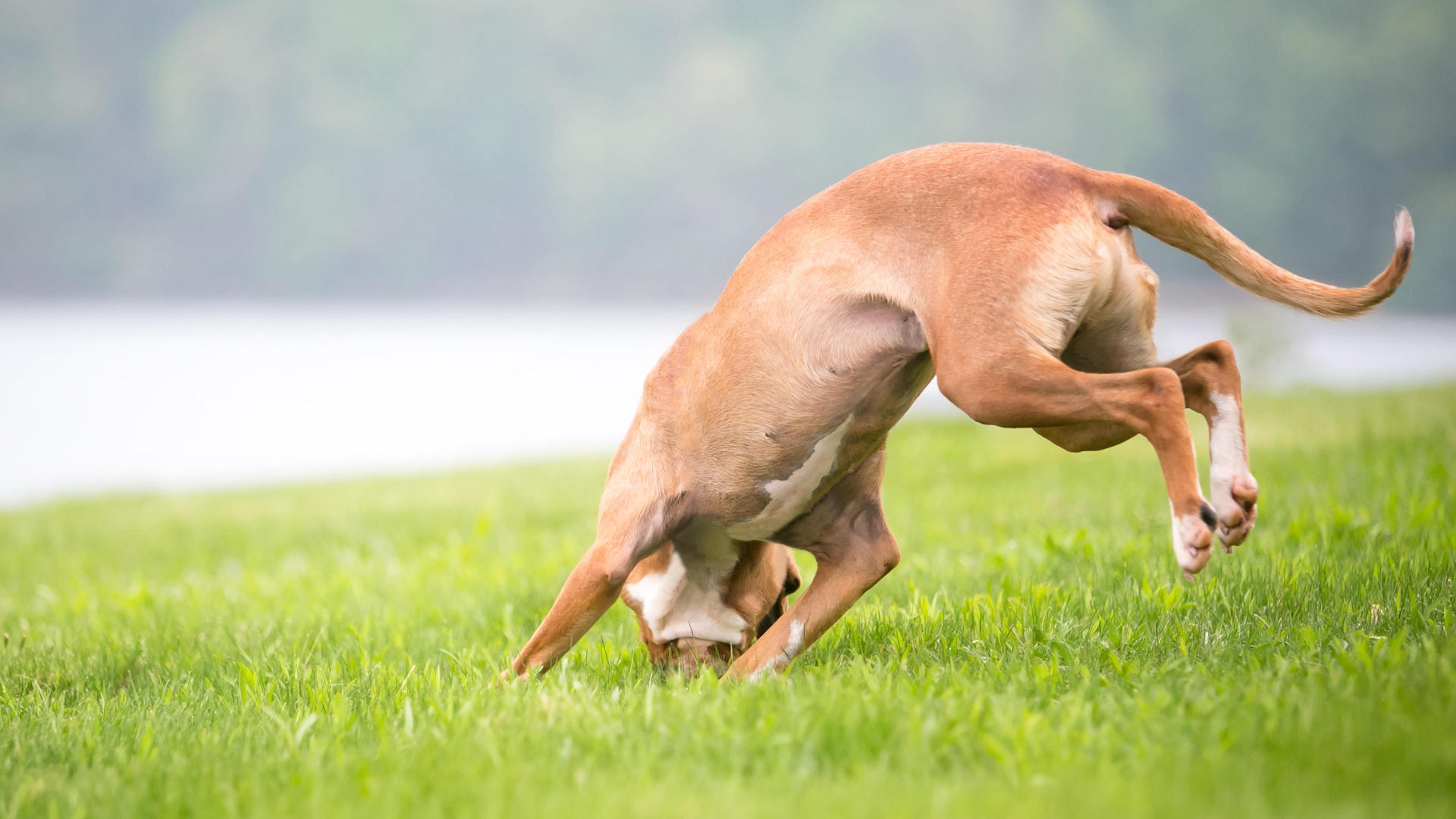
If you have spotted your dog pouncing in the grass or sand on a summer’s day, with seemingly nothing in sight, the chances are he’s chasing shadows – or “light chasing”. A dog’s eyesight is hardwired to spot movement, which triggers their prey drive.
While it can be amusing to watch the dog jumping around, it can easily become a compulsive behavior, a sign of boredom or anxiety, so it needs to be kept in check if the dog is showing signs of frustration or obsession. Seek professional help from a behaviorist or vet if you have concerns.
Read next: 20 quirky pet behaviors explained
Edited by Georgia Guerin and Alexis De Leaver.







